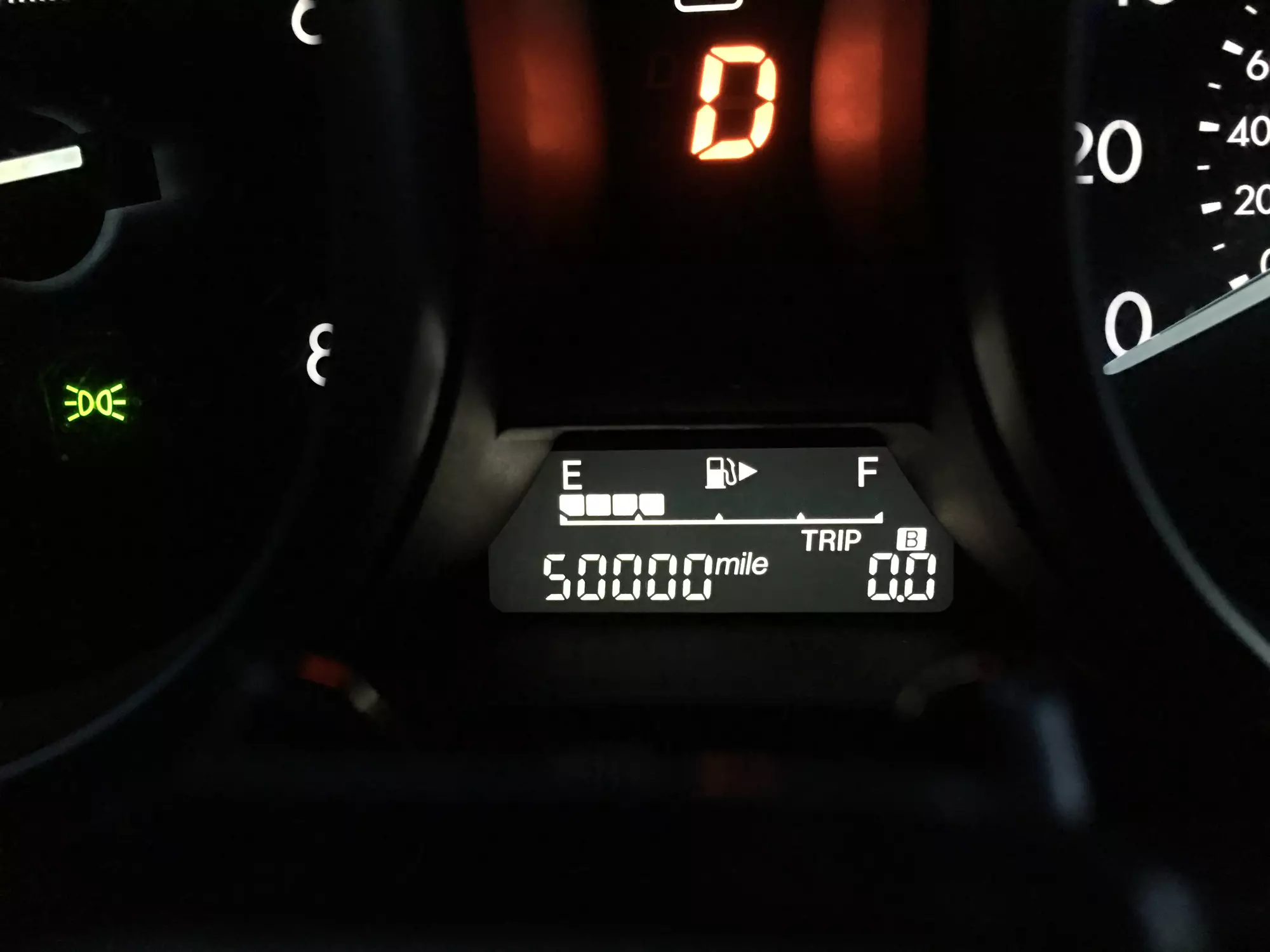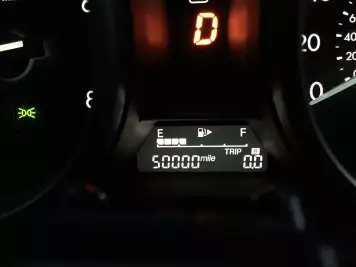We consider mileage when we buy our next secondhand motor vehicle. Buyers typically focus on mileage as a primary indicator of value and longevity. However, motorcycles have unique standards and considerations.
This article will explore how to evaluate high mileage for a motorcycle effectively and what it means for motorcycle ownership if you plan to buy one.
What is High Mileage for a Motorcycle?
A motorcycle's high mileage is generally considered to be between 15,000 and 50,000 miles. However, this range can vary based on several factors, such as the type of motorcycle (e.g., sport bikes, cruisers, touring bikes), its maintenance history, and how it has been ridden.
Thus, while these numbers provide a general guideline, they aren't definitive. It is essential to assess each motorcycle individually to determine its true condition and reliability. A motorcycle VIN check can be a helpful tool in this process, providing insights into the vehicle's history, such as past accidents or major repairs.
Factors Influencing High Mileage
Understanding the factors that influence a high mileage for a motorcycle is essential for both current and prospective owners, as these elements can significantly impact a bike's performance, longevity, and overall value.
Type of Motorcycle
The type of motorcycle affects its expected mileage. Below are the mileage ranges typically considered high for different motorcycle categories:
- Sport Bikes: 20,000 to 50,000 miles
- Cruisers: 40,000 - 50,000 miles
- Touring Bikes: 75,000 to 100,000 miles
- Dual-Sport and Adventure Bikes: 50,000 - 80,000 miles
- Dirt Bikes: 15,000 - 20,000 miles
- Scooters: 20,000 miles
Engine Size
Large engines will not need to work harder because of their size. Even with a high mileage for a motorcycle, this engine can outlast smaller ones no matter your motorcycle type.
Maintenance
Regular and timely maintenance is vital for ensuring a motorcycle's longevity. A well-maintained bike typically performs better and lasts longer than one that is neglected.
Riding Style
Aggressive owners can wear motorcycles quickly because of how they ride them. On the other hand, gentle riders can make them durable in the long run.
Prior Owners
The number of previous owners can influence a motorcycle's condition and mileage. A bike with fewer, more careful owners is likely to be in better shape than one that has changed hands frequently, even if both have high mileage.
Is 20,000 Miles on a Motorcycle Bad?
Twenty thousand (20,000) miles on a motorcycle is not necessarily bad. A high mileage for a motorcycle largely depends on the type of bike and how well it has been maintained. This includes regular upkeep, and its owners' maintenance level influences the distance it can cover.
Sport bikes, for example, handle a high mileage for a motorcycle between 20,000 and 50,000 miles. Because most riders have aggressive riding styles, they often accumulate distance quickly.
Cruisers and touring bikes are the opposite. These motorbikes are very tough and comfortable to ride. Their high mileage can even reach up to 100,000 miles. Scooters might consider 20,000 miles high mileage because of their typical usage patterns.
Generally, a motorcycle's condition is more important than its mileage. For a complete assessment, a well-maintained bike with 20,000 miles (considered high for some motorcycles) can still perform better than a poorly cared-for bike with fewer miles.
Thus, owners should focus on maintenance history and usage patterns when considering resale value. Additionally, it is essential to look into the overall condition, such as tire wear, brake performance, and engine health.
How to Evaluate a High-Mileage Motorcycle

Once you understand the key factors affecting a high mileage for a motorcycle, the next step is to evaluate its condition. To do this effectively, consider the following questions:
- How was the bike stored? Determine if it was kept in a dry, sheltered place or exposed to the elements.
- How often does the owner ride the motorcycle? Frequent use can indicate that the bike has been well-maintained.
- What kind of rider are they? Consider whether the owner is aggressive or cautious in their riding style, as this can impact wear and tear.
- Was it serviced regularly? Check if routine maintenance, such as your bike’s oil changes and air filter replacements, was performed consistently.
- Are there maintenance records available? Look for documentation of both major and minor maintenance work.
Additionally, be sure to inspect the following essential parts:
- Engine: Check for any leaks or signs of damage.
- Sound: Listen for knocking noises that could indicate engine problems.
- Cleanliness: Evaluate the overall cleanliness of the motorcycle.
- Brake pads: Inspect the brake pads for wear.
- Brake discs: Check the discs for signs of wear and tear.
- Unusual behavior: Look for any leaks or unusual behaviors during operation.
Do We Need To Test Drive the Motorcycle?
A test ride on the motorcycle will make a huge difference. Riding on and experiencing the vehicle firsthand will help you understand its totality. We cannot rely on knowing the high mileage for a motorcycle alone.
You might not see the issues when the bike rests, but moving it can help you decide. Even a well-maintained motorcycle may have a fault that is not apparent until you ride it.
Pros and Cons of Buying a High Mileage Motorcycle
When considering a high mileage for a motorcycle, it is important to weigh the benefits and drawbacks. While the advantages can be enticing, the potential downsides may make you reconsider your decision.
Pros:
- Affordability: High-mileage motorcycles are typically cheaper and often come with discounts.
- Road reliability: These bikes tend to be reliable on the road due to their extensive use and previous maintenance.
- Predictable performance: With established mileage records, their performance and reliability can be more predictable.
Cons:
- Wear and tear: High-mileage motorcycles may have been heavily used, which could lead to additional costs for repairs.
- Worn parts: Many components may be significantly worn, requiring replacement soon after purchase.
- Maintenance costs: Ongoing maintenance for high-mileage bikes can be higher due to the need for more frequent repairs.
- Lower resale value: These motorcycles generally have a reduced resale value compared to lower-mileage options.
- Limited warranty: There may be little to no warranty coverage available for high-mileage motorcycles, increasing financial risk.
Purchasing a used motorcycle can be challenging, especially when considering that 20,000 miles is considered high mileage. You must calculate the general factors above. Upgrading critical components is also a wise investment to ensure your bike operates smoothly and has a longer lifespan.
High mileage for a motorcycle often indicates a worn-out vehicle. However, remember that even motorcycles with higher mileage can be well-maintained if cared for by a responsible rider.
Moreover, the vehicle inspection element will decide in your case. Thus, if you are looking for the cheapest motorcycle, you must pay more attention to it.








![Best Sites to Check a Car’s History [2025 Review]](https://media.infopay.net/thumbnails/K8lMeG2QLjE46LPqZlmoi6SunKKdT5qvlaRZk6e1.webp)










![Best Sites to Check a Car’s History [2025 Review]](https://media.infopay.net/thumbnails/K8lMeG2QLjE46LPqZlmoi6SunKKdT5qvlaRZk6e1-w356.webp)
